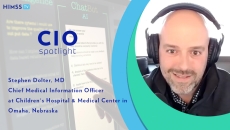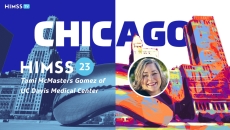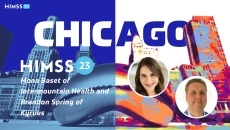Workflow
Dr. Stephen Dolter, chief medical information officer at Children's Hospital and Medical Center Omaha, discusses the pros and cons of the evolution of AI in health and where future applications of AI may be useful in the clinical setting.
HIMSS23
Instead of a sick care system, where patients only come in when there is a health issue, predictive and proactive care should be the norm, explains Ran Balicer, chief innovation officer at Clalit.
Chad Peterson, managing director at NetSPI, discusses how care organizations can protect health information by ensuring HIPAA compliance – and what companies can do to reduce vulnerability through reconfiguration.
HIMSS23
Toni Laracuente, SVP and head of Analytics at HIMSS, explains how the HIMSS Community Care Outcomes Maturity Model (C-COMM) helps build the entire picture of underserved patients and gives them the options of virtual care and care in place.
Sam Seering, product manager of Cheers by Epic, relays the benefits of the company's CRM platform, such as enabling providers to serve patients better by leveraging data points and health insights, and automating patient outreach.
HIMSS23
Tami McMasters Gomez, director of Coding and Clinical Documentation Integrity Services at UC Davis Medical Center, sees automation and AI freeing clinicians from the burdens of coding and documentation.
HIMSS23
Surescripts' focus is on lowering patient costs and improving both quality of care and patient safety, explains CMIO Dr. Andrew Mellin.
HIMSS23
The first product from the health system's department of care transformation and innovation can predict the load of a hospital within 72 hours and then match that load with a clinical team, says Dr. John Doulis.
HIMSS23
The goal of digital transformation in healthcare must be to make patients' engagement with the care journey easier, claim Mona Baset, VP of digital services for Intermountain Health, and Kyruss Chief Revenue Officer Brandon Spring.
HIMSS23
Calum Yacoubian, director of healthcare strategy at IQVIA, outlines natural language processing use cases, such as aggregating data for population health initiatives and supporting rare disease diagnoses for precision medicine.









